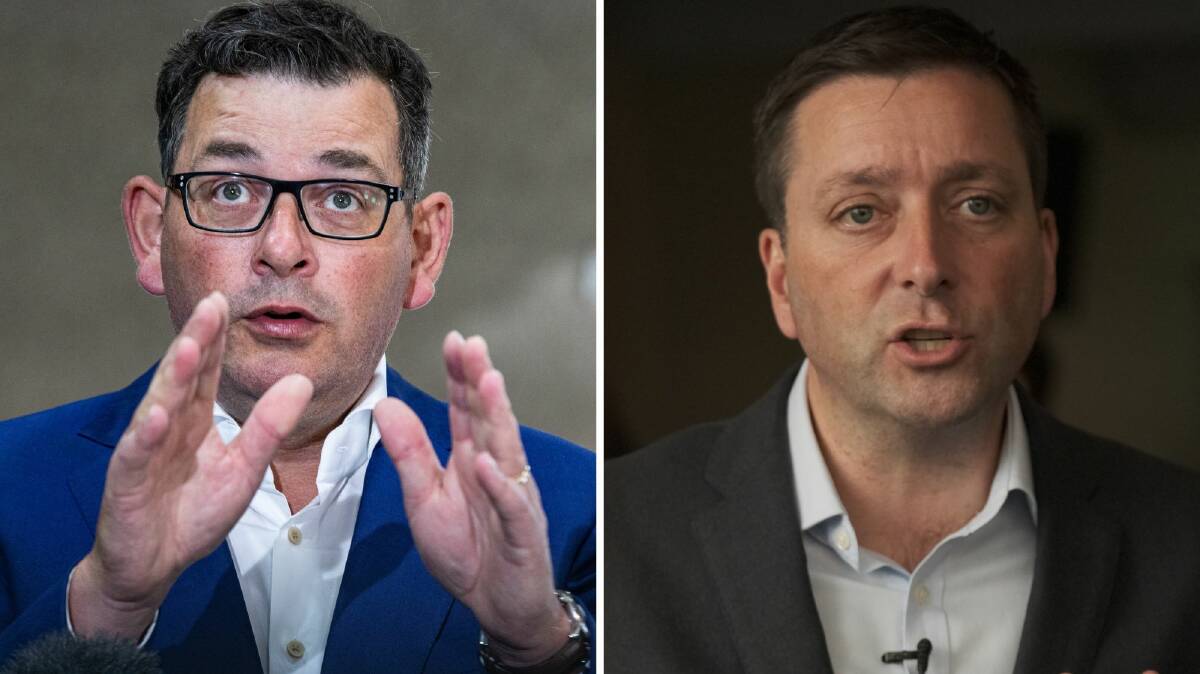The Victorian state election this Saturday has bigger implications than usual. Premier Daniel Andrews is seeking a third term after eight years in office. That in itself is not so unusual, given that state governments often hold office for long periods.
Subscribe now for unlimited access.
$0/
(min cost $0)
or signup to continue reading
But the times are not usual. This is a COVID-era election, an era which has seen governments and premiers fall because of voter backlash and the grinding pressure on political leaders. After an early period of success for incumbent governments, this year has seen two governments fall - the Federal (Scott Morrison) and South Australia (Stephen Marshall) - and two political leaders, Tasmanian Premier Peter Gutwein and Northern Territory Chief Minister Michael Gunner, retire early because of the personal pressure.
That Daniel Andrews is still standing is somewhat of a miracle. All leaders had a grueling schedule of daily media appearances during COVID, but no one more so than Andrews, who appeared before the cameras for more than 100 days straight. He also suffered a debilitating personal injury when he fell down stairs, leading to leave of absence for several months.
Victoria suffered the most COVID casualties and was the lockdown state par excellence; Melbourne was also the anti-lockdown protest capital of Australia and Andrews was a personal target more than any other leader. Despite this, he played a major role within the National Cabinet along with the now departed Gladys Berejiklian from NSW. This election is the final test of COVID-era leaders. Dominic Perrottet (NSW) arrived at the tail end.

Andrews himself is not a loveable character. A recent biography, "Daniel Andrews: the revealing biography of Australia's most powerful premier" by Sumeyya Ilanbey, shows him as a hard man who plays politics with a grim determination whether it is within the ALP, within his own government or versus his political opposition. Ministerial colleagues and leaders of the opposition have fallen by the wayside. He is tough and resilient, but not just his political opponents know him as Dictator Dan. Of all recent politicians, he best lives up to Malcolm Fraser's dictum that it is better to be respected than loved. This election will be a big test of that dictum.
Should Andrews lose, or even fall into minority government status, it will be a shock. He governs by a big margin (55 seats to 27 over the Coalition) and has consistently led in the polls, though they are narrowing. Victoria, once the Liberal Party's jewel in the crown, has voted Labor at state and federal elections for years now. Nevertheless, it would not be a devastating loss for the party nationally as it has had a series of good election results since the COVID era began. It must lose one eventually. Anthony Albanese can afford a state-level loss, explaining it away as a referendum on Andrews.
It is a bigger test for the Liberals and their Coalition partners, the Nationals, who are in the middle of an awful period of damaging internal faction-fighting and election losses. Opposition leader Matthew Guy has already been recycled after a devastating defeat at the 2018 state election.
The state Liberals are a test case for an Australia-wide scourge, the degree to which extreme-right Christian churches are determined to take over elements of the party. Victorian Labor has had its own branch-stacking scandals, but none with the possible electoral impact that several state Liberal branches have experienced.
Already Guy has been forced to disown one of his leading upper house candidates because of her links to a conservative Christian Church. He has promised that, if she is elected, she will not sit with the Liberal Party. The damage to the Liberals in a progressive state is similar to that inflicted by extremist federal candidate, Katherine Deves, in Warringah earlier this year and may be wider than just one seat because it associates the party with extremely conservative views on sexuality.
READ MORE JOHN WARHURST:
Once again, this campaign reveals the weakness of the major parties, with the minor party and independent vote approaching one-third just as it did in the last federal election. That sort of one-third, one-third, one-third split led to gains by the Greens and, more sensationally, the emergence of the six teal independents at the last federal election.
The same gains are not expected this time because of the different characteristics of state politics and because the Liberals are already weak. Climate action policy, in particular, does not carry the same potency at the state level though Climate 200 is backing four candidates, and many of the same teal volunteers who helped elect Dr Monique Ryan and Zoe Daniel are again enthusiastic. But integrity in government should matter and both major parties are vulnerable on that score. ABC pollster, Antony Green, has pointed to several seats the teals could win, including Hawthorn and Kew, where the Liberals have branded a vote for independents as a vote for Labor. The threat to Labor from the Greens has not abated in inner-city Melbourne, including the seat of Richmond, either.
The final test is about the power of the media. Once again News Corporation, publisher of the mass circulation Herald Sun newspaper, has campaigned strongly against the Labor government, and Andrews in particular. The style of conspiratorial-type banner headlines, even questioning the fall which kept him away from his job, has gone beyond the usual anti-Labor partisan media politics.
This Saturday may be just another state election, but it is one with national level implications; not directly for federal politics, but for the emerging characteristics of our democracy.
- John Warhurst is an Emeritus Professor of Political Science at the Australian National University


